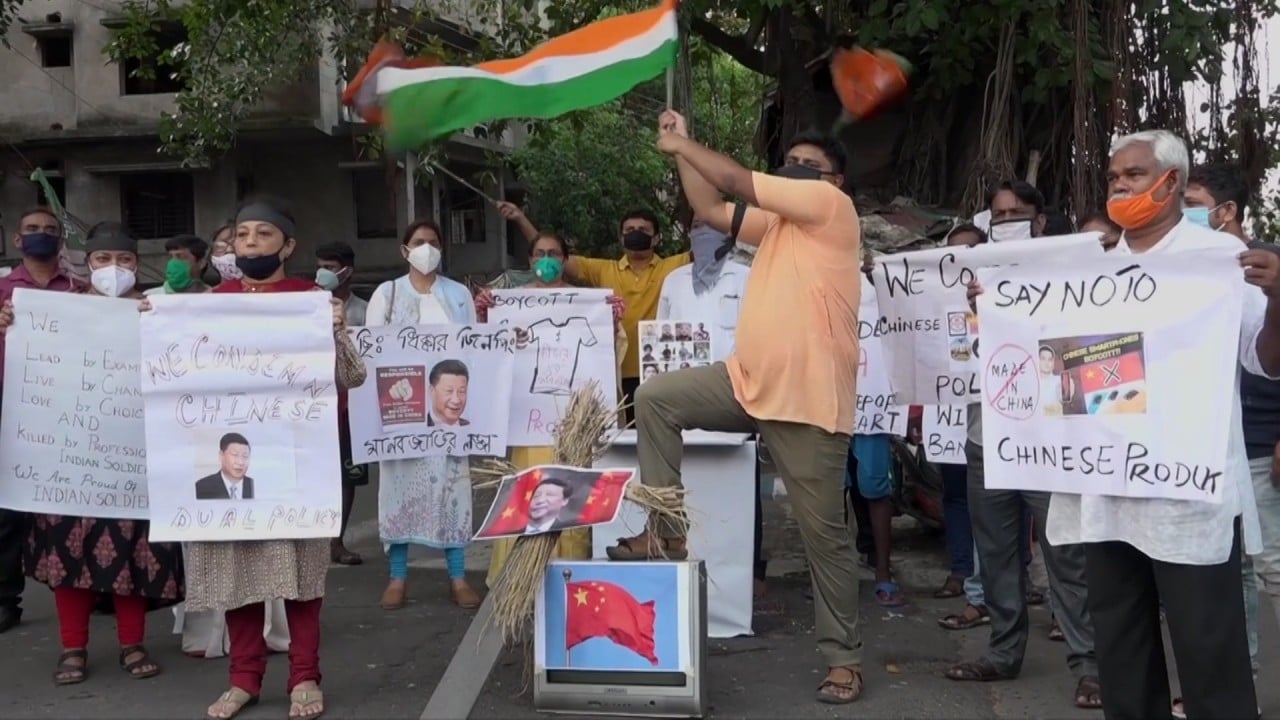
China-India border rift simmers with reports of troop moves on both sides
- Indian government says large numbers of personnel remain deployed in disputed region, warns status quo ‘unsustainable’
- Claims contrast earlier pledges by the two countries to disengage and de-escalate after last week’s deadly encounter
Diplomatic voices from India and China have called for further talks and for troops to back off from the border, following last week’s deadly hand-to-hand fray in the Galwan Valley last week.
But India’s Ministry of External Affairs said on Thursday that troops on both sides remained deployed in large numbers in the region since the conflict on June 15 that left 20 Indian soldiers dead and dozens injured, with a still unknown number of Chinese casualties.
“A continuation of the current situation would only vitiate the atmosphere for the development of the relationship,” ministry spokesman Anurag Srivastava said late on Thursday night.

01:58
Indians call for boycott of Chinese goods after deadly border clash with China
The comments stand in contrast to the pledges, by Chinese and Indian military leaders on Monday, to disengage, and de-escalate, in marathon 11-hour talks.
In an interview on Thursday with Indian local news service PTI, Chinese ambassador Sun Weidong put the blame for last week’s violence squarely on India. When asked how the dispute could be resolved, Sun said “the onus is not on China”, and called on the Indian side to conduct an investigation and “hold violators accountable”.
“The Indian side crossed the LAC [Line of Actual Control] for provocation and attacked the Chinese border troops,” Sun said, adding that Indian troops had “started the fight” on June 15. “We urge the Indian side to conduct a thorough investigation, hold the violators accountable, strictly discipline the frontline troops and immediately stop all provocative acts to ensure such incidents will not occur again.”
China-India border clash another obstacle keeping New Delhi from RCEP
Meanwhile, media reports show a build-up is under way in the disputed area. Satellite images reviewed by Reuters this week suggested China had built new structures as of Monday near the Galwan River.
The Economic Times of India reported on Friday that disengagement would take longer than expected, citing reports from the Indian military and local residents that China has built new troop shelters along the river.
It was unclear whether military moves this week were aimed at real disengagement, or were headed toward another conflict, said Srikanth Kondapalli, a Chinese studies professor at Jawaharlal Nehru University.
“There are two trends here – one is the military-diplomatic process that is outside the media coverage, and the second is for the public. The recent statements from China’s ambassador interview, the statements from the Chinese Ministry of Foreign Affairs and India’s ministry of foreign affairs are all meant for public consumption,” Kondapalli said.
“There is a process that has been initiated between the military leaders, but it will take time for the local troops to implement their concrete actions. It’s only been a few days since the meeting of top military leaders, and that takes a lot of time and effort to readjust positions. But if they do not, that means another scenario, and that means a conflict, but possibly on a higher level.”

